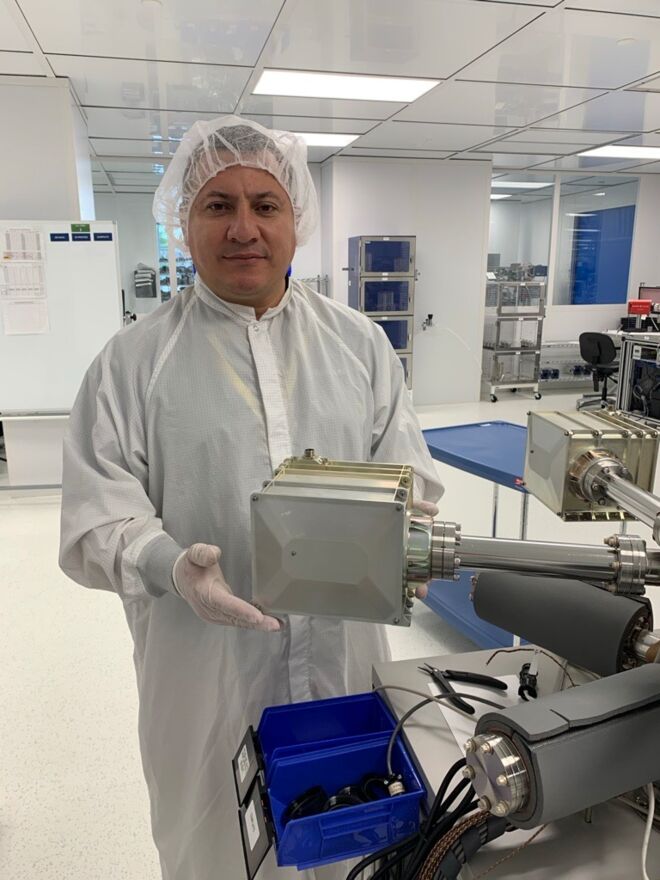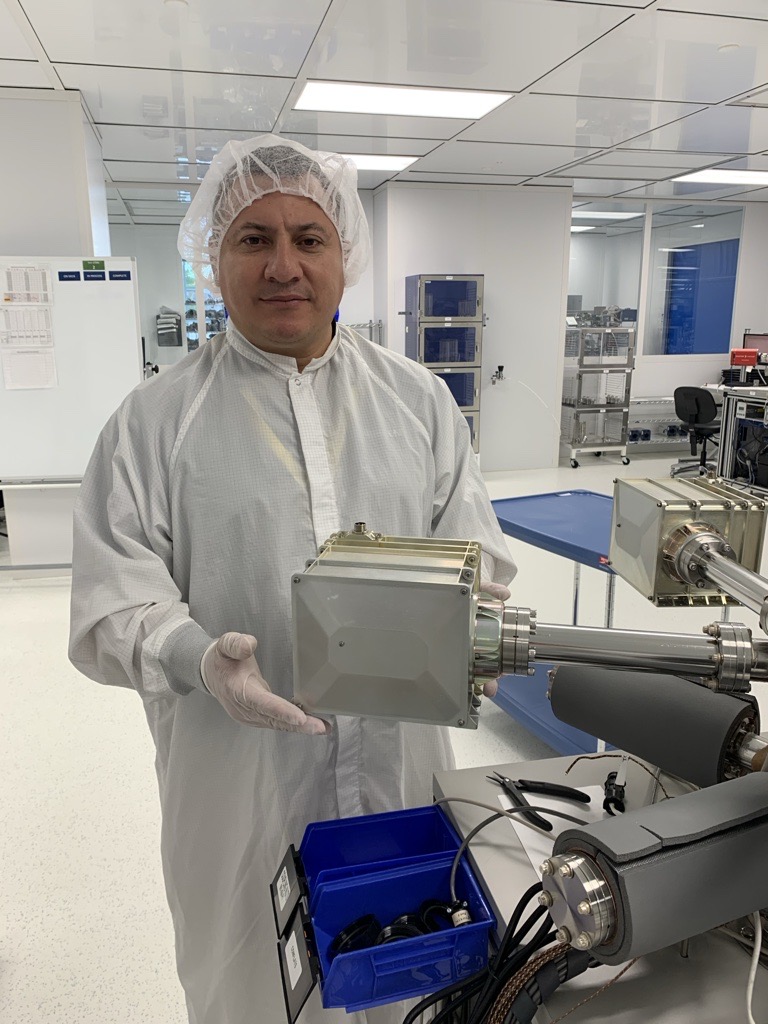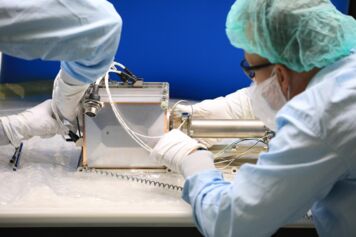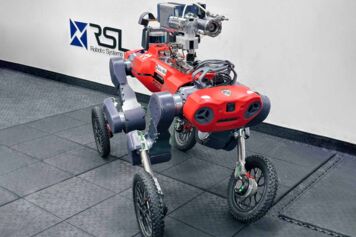INFICON Technology Reaches New Heights: A Historic Lunar Mission

In an incredible achievement for both space exploration and commercial technology, the INFICON Transpector® MPH quadrupole mass spectrometer successfully landed and operated on the lunar surface. This milestone marks a significant leap in the use of commercial off-the-shelf technology for space missions, showcasing the potential for more accessible and sustainable space exploration.
On March 6, 2025, the Intuitive Machines IM-2 Athena lander, part of NASA's Commercial Lunar Payload Services (CLPS) initiative and the fourth robotic Lunar Lander from the ARTEMIS Program, made history by landing near the lunar south pole—the southernmost landing in history. Onboard the lander was NASA’s MSolo instrument (Mass Spectrometer Observing Lunar Operations), which houses INFICON’s Transpector MPH MS. MSolo was operational during the transit to the Moon and continued to function for several hours after landing, until the lander's battery was exhausted.
The flight served an important role in supporting NASA’s lunar exploration goals. The Transpector MPH MS objective is to analyze the moon’s environment and quantify the amount of water contained in the regolith and measure any other possible volatiles present to prospect and help in the selection of potential landing sites for future human exploration.
The mission, although short-lived due to the lander's off-nominal landing position that prevented effective solar panel recharging, was a technical success. The MSolo provided valuable molecular gas signal data from both the transit and the lunar environment, contributing to NASA’s In-Situ Resource Utilization (ISRU) efforts, marking a crucial step toward sustainable space exploration.
A Historic Achievement
The Transpector MPH mass spectrometer as part of the MSolo instrument, is the first commercial off-the-shelf mass spectrometer to operate on the Moon’s surface and only the third mass spectrometer in history to do so. The last mass spectrometer to soft land on the lunar surface was during the Apollo 17 mission in 1972, over 50 years ago. This achievement underscores the advancements in commercial technology partnering with space agencies and its potential applications in space exploration.
“This mission was the result of innovation and more than 12 years of collaboration between INFICON and NASA and we should be very proud of this milestone,” said Dr. Andres Diaz, university professor and chief scientist at INFICON for Space Exploration. “Despite the challenges, the MSolo instrument successfully operated in space and on the lunar surface, providing important data for this and future missions. As a team that accepts challenges in current and new frontiers, we look forward to further exploring the moon and beyond with NASA and other space agencies and space companies.”


The data collected by the Transpector MPH will aid in analyzing the Moon’s environment, which is vital for future lunar exploration and the establishment of a long-term human presence beyond Earth. INFICON's contribution to this mission highlights our commitment to pushing the boundaries of technology and exploring new frontiers. The success of the Transpector MPH mass spectrometer on the lunar surface is a significant milestone, paving the way for future innovations in space exploration.
Celebrating Success
The INFICON team, along with partners at NASA and Intuitive Machines, deserves congratulations for this historic achievement. This mission is a powerful reminder of the challenges and rewards of space exploration, and it sets the stage for future endeavors in the final frontier.
As we look to the future, INFICON remains dedicated to advancing technology and contributing to the exploration and understanding of space. The success of the Transpector MPH mass spectrometer is just the beginning of what promises to be an exciting journey in space exploration.
Mission Highlights
- Successful Liftoff and Flight: It was a successful Space X Falcon 9 liftoff on Feb. 26, 2025, for Intuitive Machines’ IM-2 Athena flight to the moon carrying the PRIME-1 (Polar Resources Ice Mining Experiment -1) payload with a mass spectrometer from INFICON onboard!
- Historic Landing: On March 6, 2025, IM-2 Athena lander reached the lunar south pole, marking the southernmost landing in history.
- Technical Mission Accomplished: The MSolo instrument with the Transpector MPH was operational during its transit to the Moon and after landing for several hours until the lander battery was exhausted. It provided molecular gas signal data from the lander operations in space and at lunar environment.
- Commercial Technology Success: The Transpector MPH is the first commercial mass spectrometer to land on the Moon, proving that space technology is becoming more accessible.
- ISRU Contribution: The instrument will help analyze lunar resources, playing a critical role in In Situ Resource Utilization (ISRU), or using materials found on the Moon to support future missions.
Read more innovation stories from INFICON

Powering Space Exploration through Lunar Gas Detection

As experts in gas sensing and vacuum measurements in many industries including semiconductor, energy and security, our teams are always looking for the “what’s next” in innovation.

In collaboration with ETH Zurich's Robotic Systems Lab, we are working on a project named ARAMMIS – Autonomous Robots for Area Mapping, Monitoring, and In-situ Sensing.







